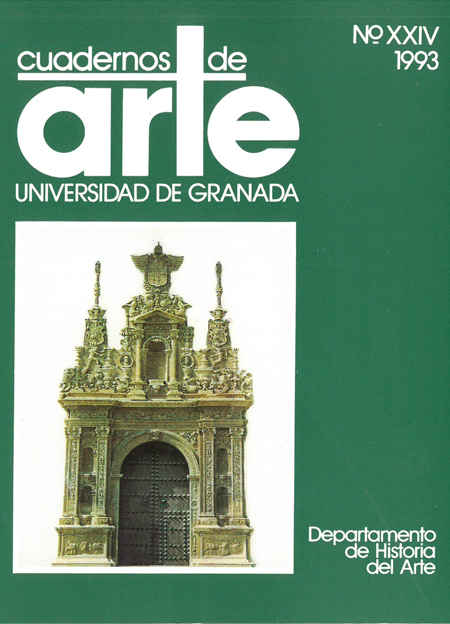El Gobierno Civil de Almería y el historicismo de posguerra
Abstract
The architecture ofthe Francoist period, as indeed the whole historical period in itself, has usually been considered aesthetically insignificant, whereas it really determines in large measure the present -day aspect of our towns. Representativeness, classicism, magnificence: these were the concepts which dominated the aesthetic ideals of the regime's ideologues, and they took shape in the style of the public buildings built in the 1940's, since this architecture had to retlect the "new order" established after the end of the Civil War in April 1939. This did not, however, involve such a radical break with previous architectural values as has so readily been supposed, that is, the rationalist avantgarde movement of the 2nd Republic as opposed to the classicist reaction of the Dictatorship. This fact is symptomatic of the very tragedy which the Francoist period embodied: an inability to generate original aesthetic values, and thus a dependence on "borrowings" from earlier periods, which led to this period being considered 'historicist'. The Civil government building in Almería is an excellent example ofthis architecture, clearly the product of a particular historical epoch and a significant architectural feature, characteristic of part of the recent history of Spain.Downloads
Download data is not yet available.
Downloads
Published
1993-11-10
How to Cite
Ruiz García, A. (1993). El Gobierno Civil de Almería y el historicismo de posguerra. Cuadernos De Arte De La Universidad De Granada, 243–255. Retrieved from https://revistaseug.ugr.es/index.php/caug/article/view/10892
Issue
Section
Estudios
License
Los autores que publican en esta revista están de acuerdo con los siguientes términos:- Los autores conservan los derechos de autor y garantizan a la revista el derecho de ser la primera publicación del trabajo al igual que ser licenciado bajo una licencia Creative Commons que permite a otros compartir el trabajo con un reconocimiento de la autoría del trabajo y la cita de la fuente original, con un uso no comercial y siempre que no se hagan obras derivadas.
- Los autores pueden establecer por separado acuerdos adicionales para la distribución no exclusiva de la versión de la obra publicada en la revista (por ejemplo, situarlo en un repositorio institucional o publicarlo en un libro), con un reconocimiento de su publicación inicial en esta revista.
- Se permite y se anima a los autores a difundir sus trabajos electrónicamente (por ejemplo, en repositorios institucionales o en su propio sitio web) antes y durante el proceso de envío, ya que puede dar lugar a intercambios productivos, así como a una citación más temprana y mayor de los trabajos publicados (Véase The Effect of Open Access) (en inglés).


 ISSN-e: 2445-4567
ISSN-e: 2445-4567








